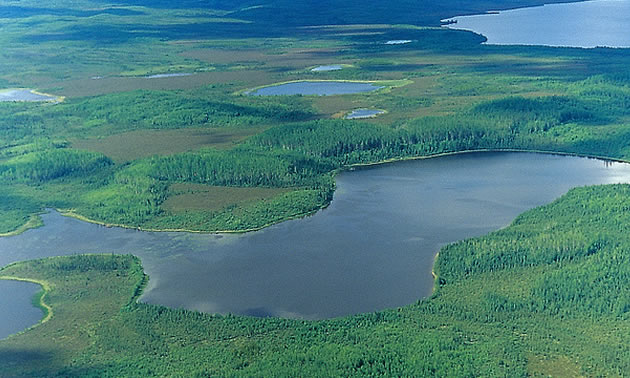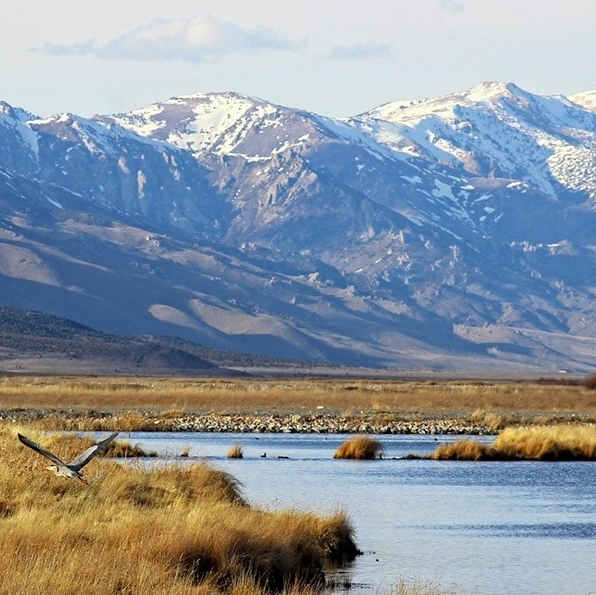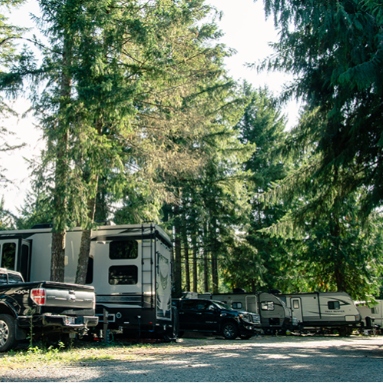Creating world’s largest boreal protected forest

The Government of Alberta partnered with The Government of Canada, the Tallcree First Nation, Syncrude and the Nature Conservancy of Canada (NCC) on the conservation of more than 6.7 million hectares (67,000 sq. km) of boreal forest.
The creation of the Kazan, Richardson and Birch River wildland provincial parks connects the federal government’s Wood Buffalo National Park to other existing wildland provincial parks.
The new and expanded wildland provincial parks are: Kazan, Richardson, Dillon River, Birch River and Birch Mountains. In total, these northern Alberta parks contribute more than 1.36 million hectares to the province’s protected area network.
This is the largest addition to the Alberta Parks system in its history, and will constitute the largest contiguous protected boreal forest in the world under the guidelines of the International Union for Conservation of Nature.
“Our government is committed to protecting our land, water and forests for future generations. Preserving these areas has allowed Alberta to establish the largest contiguous boreal protected area in the world. This historic achievement shows what can be accomplished when governments, First Nations, industry and environmental organizations work together.” — Shannon Phillips, Minister of Environment and Parks
“The environment and the economy go together – that’s why our government is investing in protecting nature and wildlife habitat. It’s encouraging to see governments, Indigenous peoples, industry and conservation groups working together to protect this significant part of Alberta’s boreal forest as an important natural legacy for Albertans, Canadians, the world and future generations.” — Catherine McKenna, federal Minister of Environment and Climate Change
Identified in the Lower Athabasca Regional Plan (LARP) in 2012, the new parks were fully reviewed to ensure there are no economic impacts on natural resource industries or communities. Industry tenures in the parks were compensated years ago, leaving the lands free for protection.
For the five new and expanded wildland provincial parks, the Government of Alberta proposes to enter into cooperative management arrangements with Indigenous communities. Indigenous advice and knowledge will inform decision-making and management of these lands and the province will provide resources to support this process.
“Our government is listening to the Indigenous peoples of Alberta who share a deep connection with this land. This opportunity for cooperative management will help to enrich and strengthen the planning, management and operation of Alberta’s provincial parks, while also implementing our commitment to reconciliation and our respect for Indigenous heritage and traditional knowledge.” — Richard Feehan, Minister of Indigenous Relations
“This collaboration between the Nature Conservancy of Canada, the governments of Canada and Alberta, and industry are aligned with the Tallcree Tribal Government’s values regarding the preservation of the boreal forest. The boreal forest holds greater value to the First Nation for exercising our traditional way of life and the quiet enjoyment of our treaty rights.” — Rupert Meneen, Chief, Tallcree First Nation
In addition, Alberta plans to integrate an Indigenous Guardian Program into these wildland provincial parks. Under this program, First Nations and Metis peoples will be hired to monitor the areas, help maintain the lands and provide education and outreach to park visitors.
“The new wildland provincial parks ensure Indigenous peoples have places to hunt and fish with their families for generations to come. The Government of Alberta’s commitment to work collaboratively with Indigenous communities to develop cooperative management plans provides a historic opportunity to have Indigenous knowledge and values influence land-use planning.” — Bill Loutitt, CEO, McMurray Metis
Treaty 8’s Tallcree First Nation, in cooperation with the NCC and the Alberta and federal governments and with support from Syncrude, generously relinquished their Birch River area timber licence and quota to enable one of the new parks (Birch River WPP) to proceed.
The Government of Alberta thanks the Tallcree First Nation for working with the government and the NCC to achieve this historic outcome. Alberta and the Tallcree First Nation have agreed to manage the Birch River WPP with mutual benefit toward conservation and economic opportunities.
“Canada’s boreal forest is unique in the world. The ecological value of this region cannot be overstated—this is a conservation achievement of global significance. Through partnership, we have been able to make a significant step forward in advancing meaningful conservation in Canada.” — John Lounds, president & CEO, Nature Conservancy of Canada
In addition, the environmental benefits created through the establishment of the Birch River WPP will provide conservation offsets that Syncrude can apply towards future industrial activities.
“Syncrude is proud to play a role in this remarkable initiative that provides both economic and environmental benefits for Albertans and Canadians. This agreement supports our commitment to responsible development of the oil sands resource while contributing to the conservation of the boreal forest for future generations.” — Doreen Cole, managing director, Syncrude Canada Ltd.
"Alberta-Pacific Forest Industries Inc. (Al-Pac) extends our support and congratulates the Government of Alberta as it formalizes the creation of the world’s largest network of protected areas in Canada's boreal forest. Al-Pac has long recognized the importance of conservation areas as an integral part of managing human activity in the boreal forest for the long-term benefit of both biodiversity and the economy." — Elston Dzus, forest ecologist, Alberta-Pacific Forest Industries Inc.
Establishing the wildland provincial parks (WPPs) will mean a protected area that is more than twice the size of Vancouver Island (32,000 sq. km), slightly smaller than the province of New Brunswick (72,908 sq. km), slightly bigger than the Great Bear Rainforest in British Columbia (64,000 sq. km), and 10 times the size of the Greater Toronto Area (7,124 sq. km).
Background
- In 2010, the Lower Athabasca Regional Advisory Council, consisting of representatives from municipalities, industry, First Nations, and environmental non-governmental organizations, recommended that the Government of Alberta establish the Kazan, Dillon River and Richardson WPPs and expand the existing Birch Mountains WPP.
- In 2012, the Government of Alberta completed the Lower Athabasca Region Plan (LARP), establishing the Birch River Conservation Area in a section of the A9 forestry management unit (FMU). While the oil sand agreements in the area were cancelled, forestry was permitted.
- Between 2012 and 2016, the Government of Alberta spent $45 million to purchase oil sands and metallic mineral leases in the identified conservation areas.
- In March 2018, the Government of Alberta, the NCC, the Tallcree First Nation, and Syncrude signed a Memorandum of Understanding that would see the Tallcree First Nation relinquish its timber licence and quota in the A9 FMU to the Government of Alberta.
- By Tallcree First Nation voluntarily relinquishing its timber licence and quota, commercial forestry will no longer take place in Birch River WPP.
- The establishment of the Kazan (570,822 hectares of new land for a total of 659,397 hectares), Richardson (264,727 hectares of new land for total of 312,068 hectares), Dillon River (191,545 hectares) and Birch River (331,832 hectares) WPPs, and the expansion of the Birch Mountains WPP (by an additional 1,563 hectares) create 1,360,390 hectares of new protected land.
- Birch Mountains WPP is already designated and is now 145,969 hectares in size.








